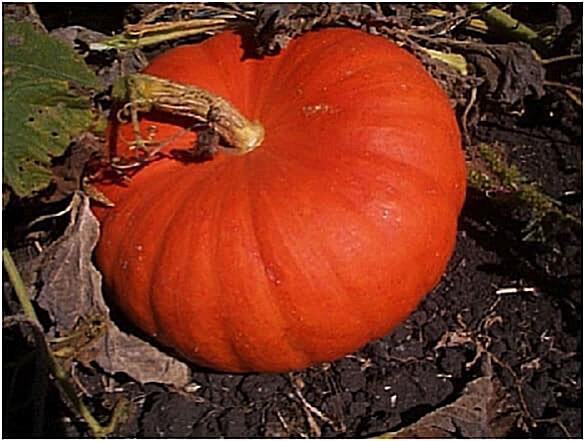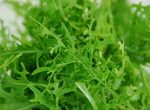Pumpkin – Rouge Vif d’Etampes
€2.95
Description
Pumpkin – Rouge Vif d’Etampes produces large, flat, heavily ribbed pumpkins with bright orange-red skin. The fruit can weigh 10kg and stores well. Very unusual variety.
Sowing:
Mid April until late May.
Sow individual seeds into small pots (7cm) or large modules and keep in a warm place. Pot on into a 10cm pot when ready. Plant out in late May-June after hardening off. Initial protection with a cloche is beneficial.
Approx. seed count: 5
Growing pumpkins:
Pumpkin – Rouge Vif d’Etampes
Family:
Cucurbitaceae
Related to:
Courgette, marrow, cucumber, melon, squash.
Introduction:
Pumpkin – Rouge Vif d’Etampes are not well suited to a small garden as they produce a mass of shoots and leaves and may take over your whole plot.
Botanical classification:
The word pumpkin derives from the Greek word pepon which means ‘cooked by the sun’. The French name for pumpkin ‘potiron’ means ‘large mushroom’.
History:
Pumpkins originated in Mexico, but are now grown all over the world.
Soil and site:
Pumpkins need a fertile, free-draining soil that can hold plenty of moisture. A generous application of well-decomposed compost is beneficial (about 1 bucket per square meter).
They also need a sheltered place in the garden as they really despise strong winds.
Sowing:
Pumpkins are very tender plants.
I usually sow seeds in early May individually into 7cm pots. The pots are left ideally in a propagator in the greenhouse or on the windowsill at home (south facing). They may also be fine in a tunnel without a propagator, but plants have to be covered up with fleece during cold spells to protect them from frost damage.
After about 3 weeks – or before the plants get pot bound – I pot them on into 12cm pots. The pots should be left in the greenhouse or indoors.
Planting:
Start hardening off the plants at the end of May and plant out in early June. Do not plant if the weather forecast predicts cold windy spells which are quite common during this time.
The safest way would be to plant them under cloches which are covered with bio-net.
Spacing:
Please do not underestimate the space a pumpkin plant requires. The ideal planting distance is one plant every two meters. It is important to stick to this spacing but you can interplant some lettuce or annual spinach into the gaps. They can be harvested before the pumpkins take over.
Rotation:
Pumpkins belong to the cucurbit family. This family is not prone to any soil borne pests and diseases, so there is no need to stick to a strict rotation. In fact they could be grown in the same place every year.
Plant care:
From each pumpkin plant you will only get one large pumpkin (or two reasonably sized ones). In order to get one large fruit you should remove the smaller fruits and flowers so that all the energy of the plant goes into producing just one big one.
Remember that pumpkins grow quite unruly. They will grow into pathways or over other vegetables, so you need to keep them in place by moving the shoots back to where they should be.
Because of our wet summers and autumn I would recommend putting a slate or piece of timber underneath the ripening fruits to avoid rotting. Be aware though that the timber is also a slug trap, so you need to check regularly what lies beneath, otherwise you may create another problem.
Harvesting:
Pumpkin – Rouge Vif d’Etampes should ideally be harvested when the leaves have died back. However it is not always possible to wait that long especially if there is a risk of frost. In that case pumpkins should be harvested before that cut carefully with the handle (fruit stalk) still attached to the pumpkin otherwise they will not store as well.
If they have not ripened enough you should move the fruits out into the sun during the day and move them back inside at night. After a week of doing that they should be cured (ripe). Obviously if you want to eat them immediately there is no need to do that.
Storing:
Pumpkins actually store for a surprisingly long time. If they have properly ripened they will store until March in a cool, but frost free shed.
Potential problems:
Apart from their sensitivity to cold and windy weather there are no specific pests or diseases that affect pumpkins. Slugs, however, like the newly planted pumpkins, so you need to protect them.
How much to grow?
Pumpkins are only suitable for large gardens. Everybody underestimates the space they require. Unless you have a large garden only one to two plants are sufficient. At least you’ll have some fun at Halloween.
Varieties:
Pumpkin – Rouge Vif d’Etampes
Why not subscribe to my monthly gardening newsletter?
https://greenvegetableseeds.com/newsletters/
A good information for all gardening news is the Irish Garden Magazine:




